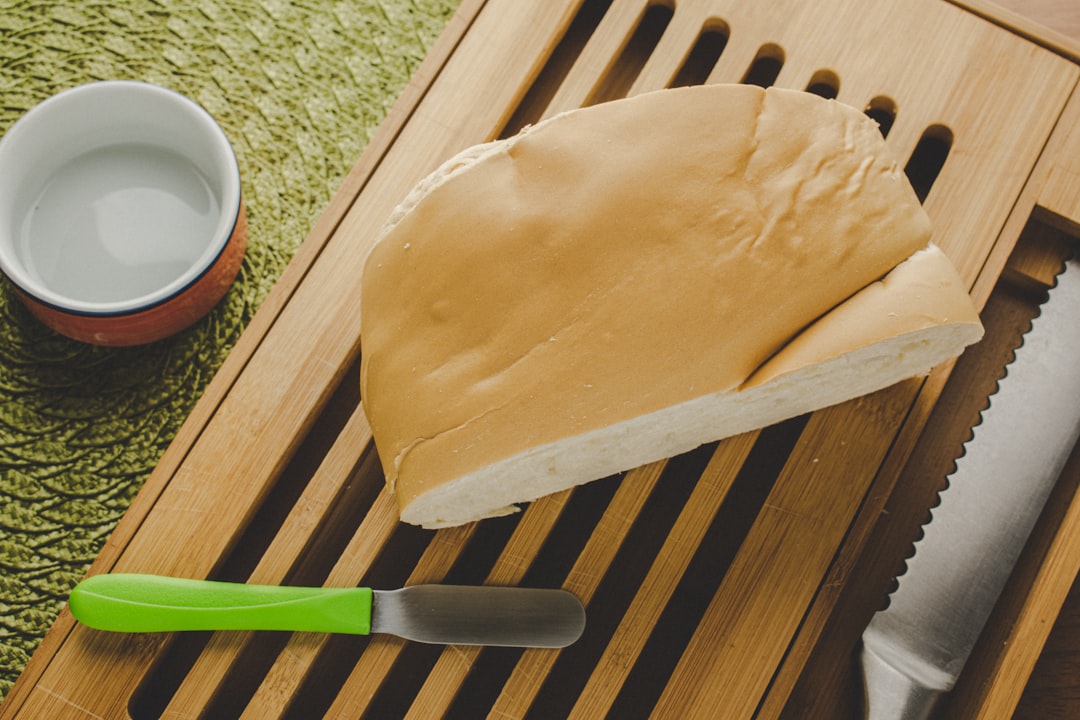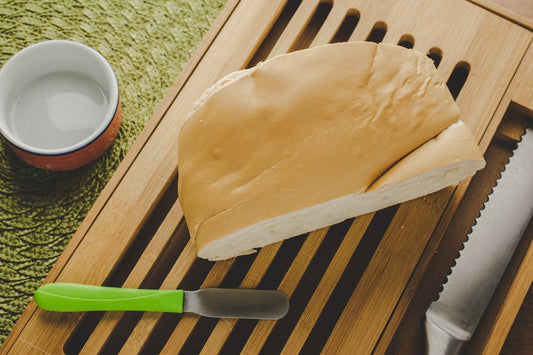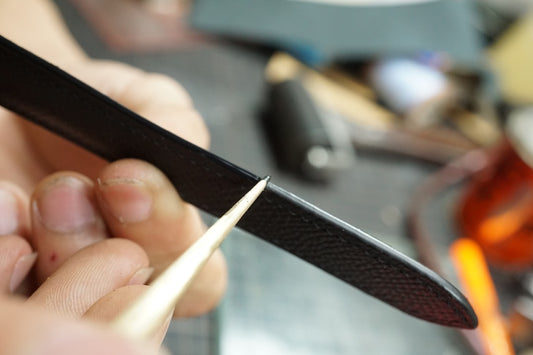
Share
When to Hone a Japanese Knife: The Complete Kitchen Maintenance Guide
Estimated Reading Time: 7 minutes
Key Takeaways
- Regular honing keeps your Japanese knife sharp and extends its lifespan.
- Use a ceramic honing rod suitable for the hard steel of Japanese knives.
- Hone your knife weekly or before major prep sessions.
- Proper technique is crucial to avoid damaging the blade.
Table of Contents
- Understanding Knife Honing—Honing Steel vs Ceramic Rod
- When to Hone a Japanese Knife—Recognizing the Signs
- Tools for Honing Japanese Knives—Best Honing Rod for Japanese Knives
- Honing Steel vs Ceramic Rod—What’s the Difference?
- How to Hone a Japanese Knife—Step-by-Step Instructions
- Honing Frequency for Kitchen Knives—Keep Your Edge Sharp
- Conclusion—When to Hone a Japanese Knife
- Additional Resources—Learn More
Understanding Knife Honing—Honing Steel vs Ceramic Rod
Before we discuss exactly when to hone a Japanese knife, it’s important to understand the process itself.
What Is Honing?
Honing is the act of realigning the edge of the blade. A knife edge is microscopically thin and, with use, that edge folds or bends over—even if it doesn’t look “dull” to the naked eye. Honing straightens those tiny bends, making your cuts effortless again.
- Honing does not remove any metal from the blade. It’s about correcting alignment, not reshaping the edge.
- Sharpening, by contrast, is the process where material is actually ground away to create a brand new edge.
Why Is Honing Essential for Japanese Knives?
Japanese knives are made of harder, finer steel than many Western knives. Their blade is ground to a more acute angle—typically 15 degrees or less. This sharp, hard edge offers maximum precision but is more brittle and prone to become misaligned.
- Regular honing helps keep the original geometry of the Japanese blade without grinding away precious steel.
- This means your knife stays sharper for longer and needs expensive, invasive sharpening much less often.
- As Oishya explains, regular honing preserves the blade’s shape while minimizing overall wear.
Honing Steel vs Ceramic Rod
The right tool matters—especially for Japanese steel.
- Honing steels (traditional steel rods) are common in Western kitchens. However, they are sometimes too coarse or soft for Japanese blades, which are harder and more delicate.
- Ceramic rods are much harder and have a finer grit, making them ideal for Japanese knives.
For Japanese steel, using the right honing rod is essential. Using an incorrect rod risks chipping, rolling, or prematurely dulling your fine edge.
For more insights on choosing the best honing tools, check out our Honing Steel vs Ceramic Rod guide.
When to Hone a Japanese Knife—Recognizing the Signs
The most important question: When to hone a Japanese knife?
If you wait until your blade is truly dull, it’s too late for honing—you’ll need to sharpen. But regular honing keeps the edge peak-sharp.
Signs It’s Time to Hone
How do you know when to hone your Japanese knife? Look for these signs:
- Cutting Feels Stiff: If slicing through vegetables, fish, or meat is not smooth—even slightly sticky or draggy—it’s time to hone.
- Reduced Sharpness: The blade seems less responsive; food doesn’t fall away cleanly after a cut.
- Edge Looks Off: If you closely inspect under good light, a fine “roll” or misalignment might be visible on the edge.
- Routine Use: For regular cooks, simply using your Japanese knife a few times is enough to require a quick hone.
As The Cooking Guild notes, "Signs your Japanese knife needs honing include difficulty slicing and the blade feeling less sharp."
The Right Timing
Timing is critical. If you hone too rarely, the edge will degrade past the point that honing is effective, and only sharpening will restore performance. If you hone too often but with the proper technique, you simply maintain that crisp edge.
Recommended frequency:
- Once a week for typical home use.
- If you cook daily or for many people, hone each day or before each major prep session.
- For highly specialized tasks (like sushi-making), many chefs hone before every use.
This approach, according to Musashi Hamono, "improves efficiency, extends knife lifespan, and reduces sharpening needs."
Tools for Honing Japanese Knives—Best Honing Rod for Japanese Knives
With hard, fine-edged Japanese knives, you can’t use just any honing rod. For best results, choose one of the following:
Ceramic Honing Rods
- Best for Japanese knives
- Extremely hard—won’t be worn down by hard Japanese steel.
- Fine grit (ultra-smooth surface) polishes and realigns without chipping.
- Gentle on the edge but incredibly effective at restoring alignment.
Fine-Grit Steel Rods
- Stainless steel, but much smoother than typical “grooved” honing rods.
- Must be harder than your knife’s steel—many are not.
- Only recommended if labeled as suitable for Japanese blades.
Key Selection Criteria
When choosing the best honing rod for Japanese knives, look for:
- Hardness: Must be harder than the knife’s steel.
- Fine Grit: Avoid coarse or deeply-grooved rods.
- Length: At least as long as the blade, ideally longer, so you can sweep the whole edge safely in one stroke.
As Knifewear states, “Ceramic rods are preferred for Japanese knives due to their hardness and fine grit.”
For a deeper understanding of honing tools, refer to our Honing Steel vs Ceramic Rod comparison.
Honing Steel vs Ceramic Rod—What’s the Difference?
Choosing between honing steel vs ceramic rod can be confusing. Here is a clear comparison:
| Feature | Honing Steel Rod | Ceramic Rod |
|---|---|---|
| Grit | Coarse or fine (depends on model—many are coarse) | Fine/ultra-fine |
| Durability | Highly durable, hard to break | Can break if dropped |
| Suitability | Typically used for Western knives; some fine models OK for Japanese | Ideal for Japanese knives due to hardness and smoothness |
| Pros | Sturdy, affordable, wide selection | Gentle touch, precise, protects hard steel |
| Cons | May be too rough, can damage thin Japanese blades | Brittle, requires careful handling |
Oishya warns, "Steel rods can be too aggressive for hard, thin Japanese blades," while “Ceramic rods are ideal for Japanese knives.”
Additional Points and Precautions
- Honing steel rods are excellent for softer, Western-style knives but risk damaging the edge of Japanese blades.
- Ceramic rods match the hardness and thin edge geometry of most Japanese knife steels.
- Handle with care: Ceramic rods break more easily if dropped, but they deliver the best result for traditional Japanese knives.
How to Hone a Japanese Knife—Step-by-Step Instructions
Now, let’s walk through how to hone a Japanese knife with detailed, easy-to-follow steps.
Preparation
-
Set Up Your Space
- Place a damp towel on your countertop for traction.
- Hold your honing rod (preferably ceramic) vertically, with the tip pressed into the towel.
- Ensure you’re in a well-lit area.
Setting the Angle
-
Set the Correct Angle
- Hold the knife at a 15-degree angle to the rod.
- For reference, 15 degrees is about half the angle between straight out and directly down (30 degrees).
Honing Motion
-
Hone the First Side
- Start at the heel (base) of the knife.
- Gently draw the blade down the rod, moving from heel to tip, so the entire edge touches the surface.
- Use minimal pressure—let gravity and the weight of the knife do the work.
-
Alternate Sides
- Now switch to the other side.
- Complete the same motion, alternating after each stroke.
-
Repeat Strokes
- Repeat for 5–10 strokes on each side, depending on how much realignment the edge needs.
Finishing Up
-
Final Steps
- Wipe off the blade with a clean, dry cloth to remove any microscopic debris or ceramic powder.
Safety Tips & Common Mistakes
- Use gentle, controlled movements. Don’t force the edge against the rod.
- Avoid deep-grooved steel rods—these damage the delicate edge of Japanese knives.
- Maintain the correct angle—too shallow flattens the edge, too steep may chip it.
- Never hone over a hard or unstable surface. Use a damp cloth for stability.
- If unsure, go slow and steady. Consistency and correct technique are more important than speed.
Knifewear underscores, "Hold the knife at a 15-degree angle to the rod, typical for Japanese blades," while Oishya adds, "Always angle the blade correctly—incorrect angles can dull the edge."
For detailed sharpening techniques, visit our How to Sharpen Japanese Knives guide.
Honing Frequency for Kitchen Knives—Keep Your Edge Sharp
It’s one thing to know how to hone. But how often should you hone your Japanese kitchen knives?
Honing Frequency for Kitchen Knives
-
For Regular Home Cooks
- Hone once or twice a week.
-
For Professional Chefs or High-Volume Kitchens
- Hone every single day, often before every main prep session.
-
For Seldom Used Knives
- Hone every couple of weeks, or if you notice any decline in cutting performance.
Sharpening Frequency
- Sharpening is more invasive and less frequently required—usually every 1–2 months for active home cooks, and 2–4 months for light users.
- Regular honing dramatically reduces sharpening frequency.
Creating Your Schedule
- Set phone or calendar reminders.
- Pair honing with another regular kitchen cleaning task.
- Always hone before major meal prep—it sets you up for a smoother, safer cooking experience.
As noted by Musashi Hamono and The Cooking Guild, "Ideal honing frequency: Once or twice a week for regular home cooks. Sharpening is typically done every 1–2 months."
Conclusion—When to Hone a Japanese Knife
When to hone a Japanese knife isn’t a mystery—it’s a routine. Use the right tools, watch for cutting drag or visual edge issues, and hone weekly or daily based on your kitchen workload.
- Regular honing using a ceramic rod or fine steel rod (when suitable) keeps your Japanese knife at peak sharpness, extends its life, and minimizes sharpening needs.
- Cutting becomes effortless. Food prep is safer and more enjoyable.
- Don’t let dull knives slow you down or risk injury—by taking a few minutes each week, you’ll preserve both your knives and your love of cooking.
Making a habit of maintaining your kitchen knives means they’ll serve you (safely and beautifully) for countless meals to come. Understanding when to hone a Japanese knife ensures every cut is clean and every meal is a pleasure.
Additional Resources—Learn More
Build your knife maintenance skills and dive deeper into the craft:
- Beginners Guide: How to Sharpen Your Japanese Knife
- Sharpen vs. Hone: When and How to Maintain Your Blades
- Knife Knowledge: Basics Care for Japanese Knives
- Honing vs. Sharpening Stones: Unveiling the Secrets to Knife Maintenance
For advanced care:
- Consult Japanese knife specialists or retailers for advice and tool recommendations.
- Find professional sharpening services when honing is no longer enough.
- Consider culinary workshops or knife care classes for hands-on practice.
Quality Japanese knives are a lifelong investment. By understanding when to hone a Japanese knife and applying the correct maintenance techniques, your blades will reward you with years of artful, effortless slicing.


